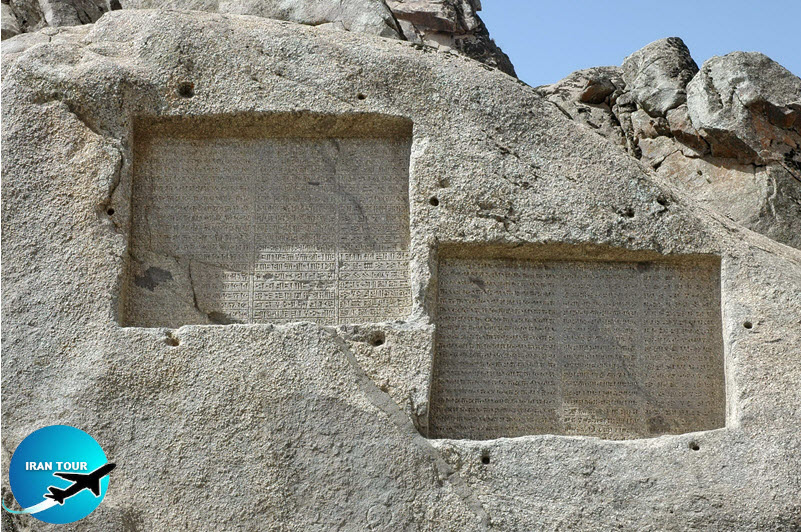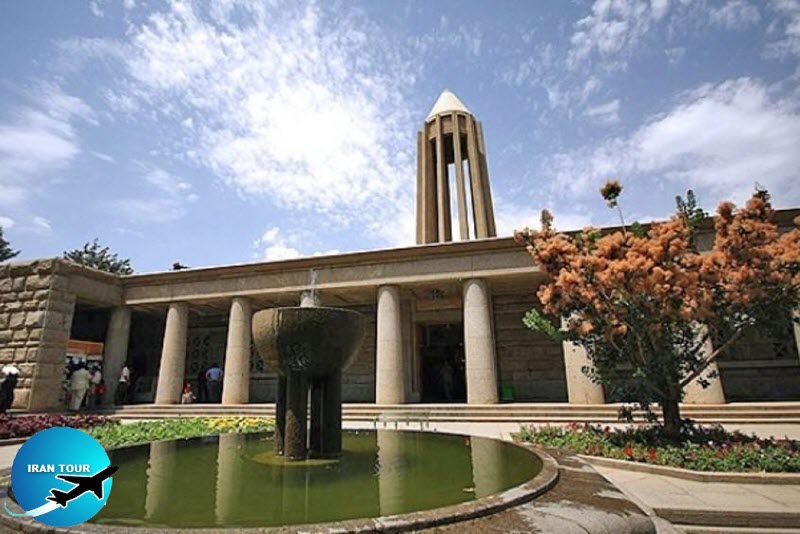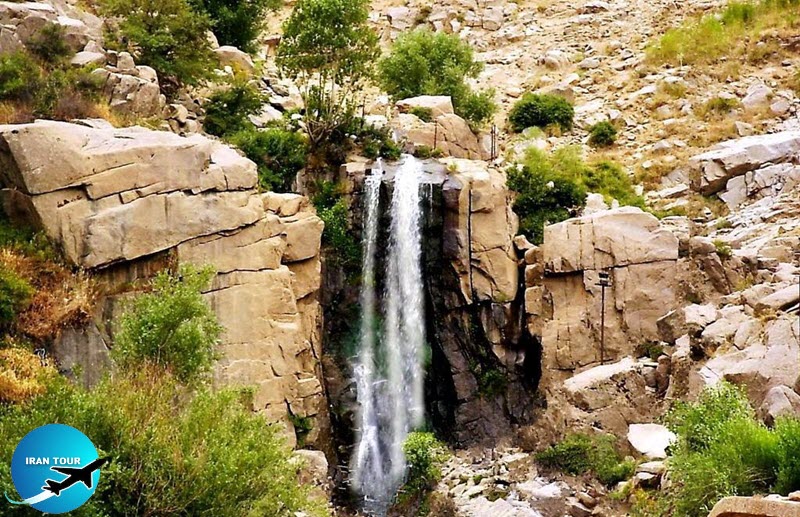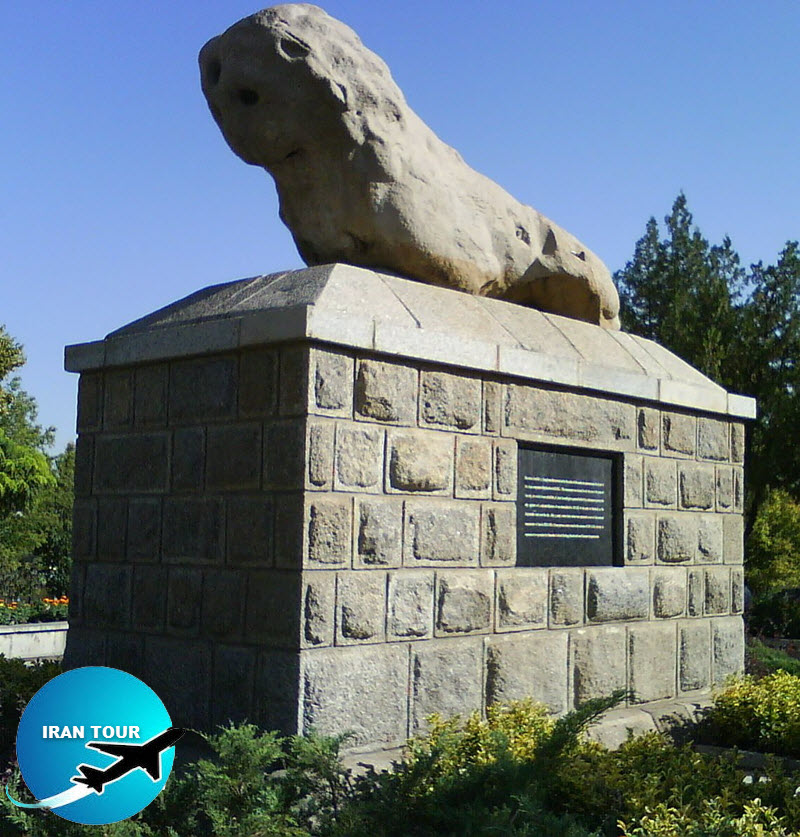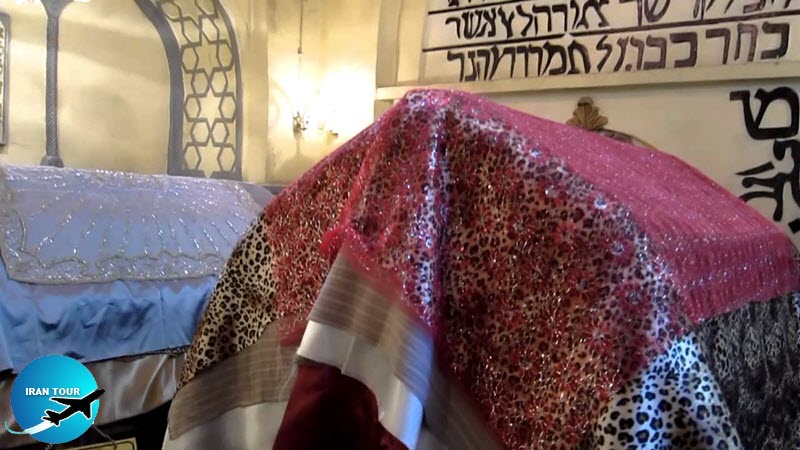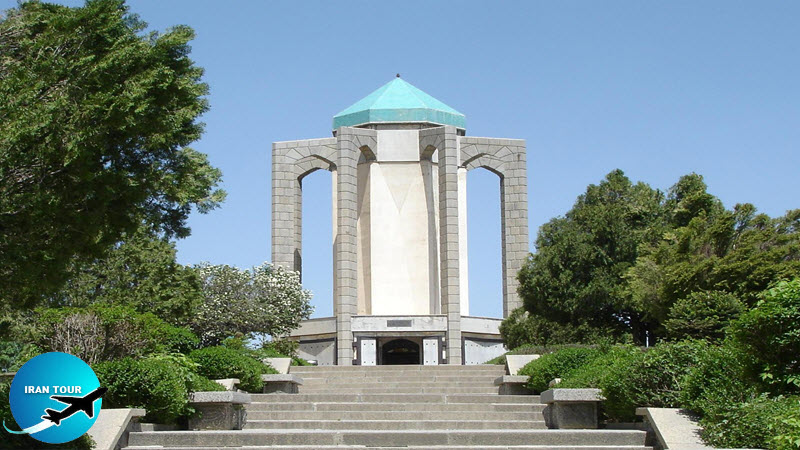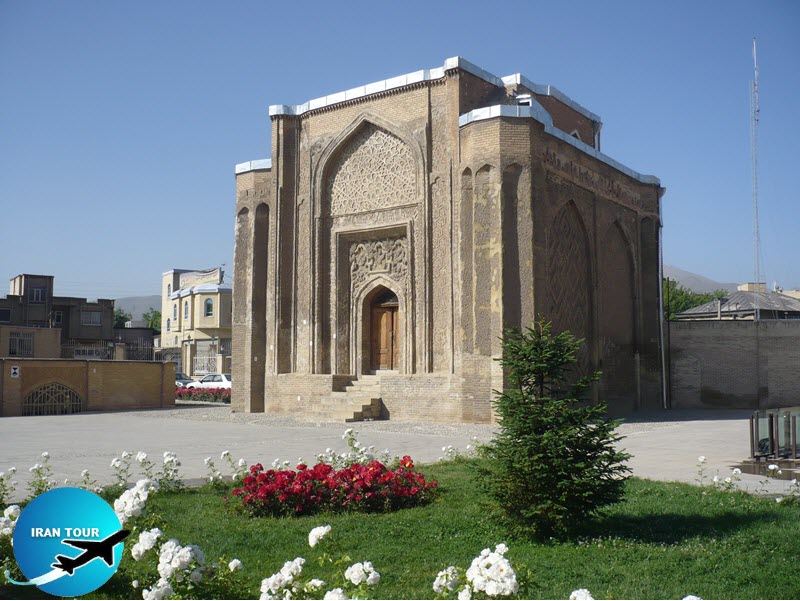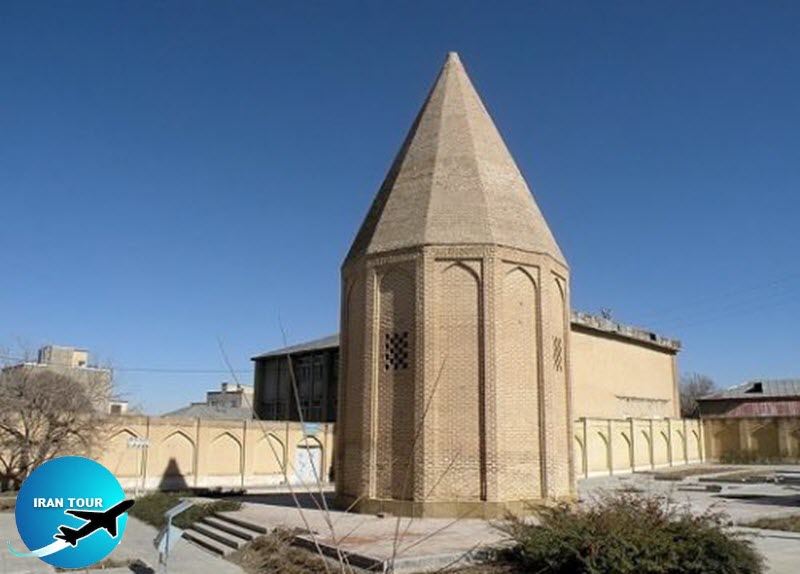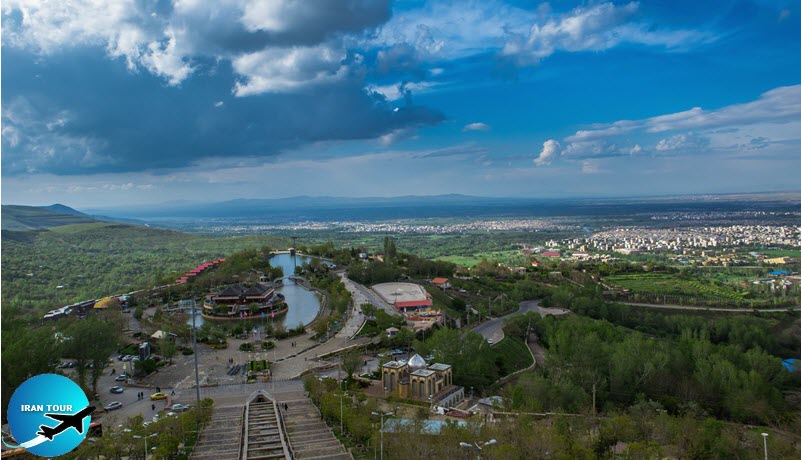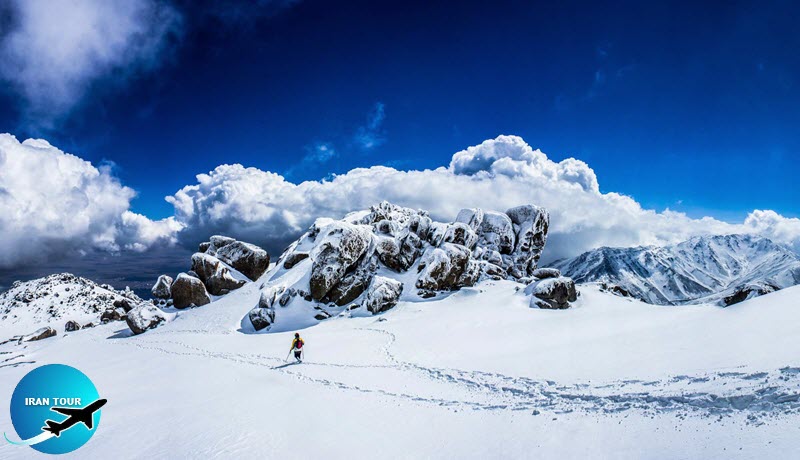Hamadan: Beating heart of Persian history
Featuring a long civilization history and a rich culture, Iran has played an important role in the development of human civilization. Hamedan, as the first Iranian capital city after the arrival of Aryans, has borne a heavy burden of responsibility in this regard. Hamedan has been the context of many historical events since thousands of years ago, and this historical continuity can be clearly observed in the valuable monuments of prehistoric to the contemporary age, available in this province.
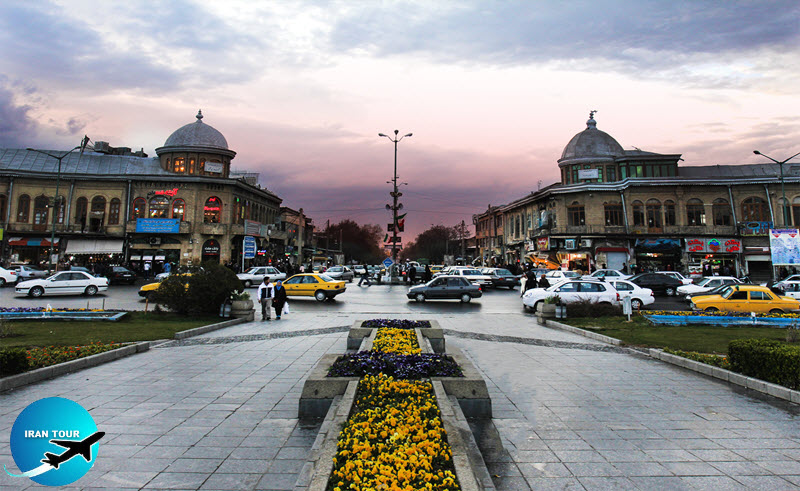 |
It can be said that Hamedan is deeply rooted in the history, culture, and ancient civilization of Iran. The name of this city rings a bell in the minds of those interested in the history and culture of Iran and sends them on a journey through the depths of history. That's why the beating heart of Iran" appears to be more fit and meaningful than any other titles dedicated to this city. The history of this city dates back to 728 BC, when Deioces, the first king of the Median dynasty, decided to build a stronghold in his capital city. During the Achaemenid Empire, Hamedan was chosen as the summer capital of the state due to its favorable and pleasant weather in summer. Being so close to the green and high mountain of Alvand is one of the important natural traits of this city. Hamedan is located on the Eastern Front of Alvand and looks like a gemstone surrounded by this mountain from west, southwest, and south. Beautiful valleys, crystal clear waters, and the mountain breeze have gathered together to bring a special beauty and freshness to this city. Hamedan, as one of the four-season and oldest living cities in the world, is a city which every Iranian and non-Iranian individual must once travel to. The joy of experiencing four distinct seasons which hopefully you can find in Hamedan.
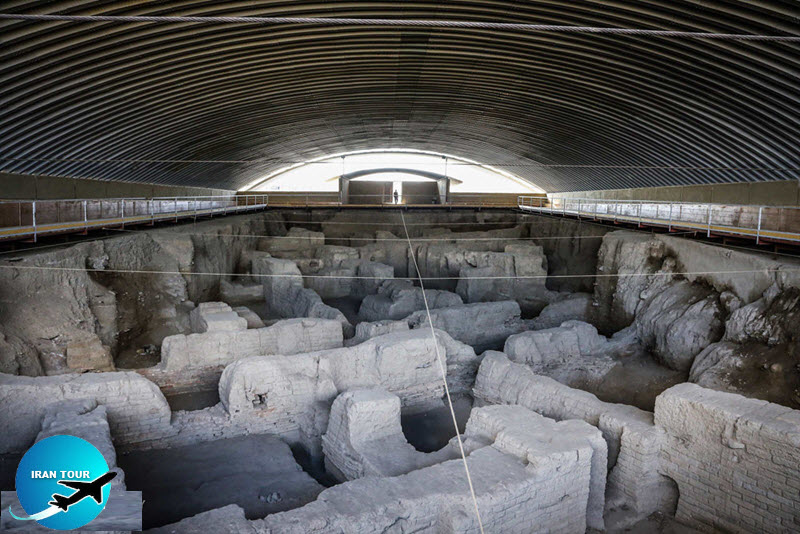 |
Hegmatane Complex: The Ancient City
Hegmataneh's ancient city was built by a group of Aryans (Medes) who traveled from the southern part of Siberia to the Iranian plateau and resided in the west part of Iran. Hegmataneh was the capital of the Median Empire from the 8th century to the 6th century BC and later was the summer capital of the Achaemenid. After appointing Hegmataneh as a capital by Deioces (728 AD), he decided to construct a consolidated palace that consists of seven fortifications, each one inside the other. Many relics were found from Hegmataneh hill and many of them are kept in different museums inside and outside of the country.
Gold plaque with the name of Aria Ram Neh (Achaemenid era) in the Berlin Museum. Gold plaque with the name of Darius (Achaemenid era) in the National Museum of Iran. Silverplate with the name of Artaxerxes (Achaemenid era) in New York Museum. A script by the name of Artaxerxes II (Achaemenid era) in the British Museum.
Ganj Nameh inscriptions
Ganj Nameh inscriptions depict the ancient civilizations of Hamedan. The inscriptions are located on the foothill of Mount Alvand, beside the Ganjnumeh waterfall, along the Imperial Road. Imperial Road is one of the world's first international main roads that connected Hegmataneh, the summer capital of the Achaemenid, to Persepolis and Sardis Darius 1 (521-486 BC) and his son Xerxes (486-465 BC) had chosen this site to establish their inscriptions in order to represent the greatness
of the Achaemenid Empire and their pure beliefs and ideas to the people passing by.
Avicenna's mausoleum
Avicenna is the most well-known Muslim scientist in western civilization. He was born 980AD in Bukhara Uzbekistan which was part of Tran during that time. He mastered different branches of science such as mathematics, algebra, geometry, astronomy, theology, philosophy, logic, medicine, music, and poem. His book, "Canon of Medicine' and 'The Book of Healing' are known worldwide. He would travel a lot and in one of his travels, when he was only 58 years old, passed away in Hamadan and was also buried here, Avicenna's mausoleum is located in the middle of a square with the same name. A square with old plane trees, symmetric gardens, a beautiful building, and a statue of that great man all together creates a nice promenade and it shines as a brilliant
monument in the heart of the city.
Ganj Nameh Waterfall
Each of the Ganjnameh inscriptions is a set of cuneiform characters (from left to right) carved in three official and common languages of the Achaemenid era, in three columns and twenty rows, on a piece of rock connected to Mount Alvand. The left, middle and right columns are inscribed in ancient Persian, Elamite, and Babylonian languages respectively. Both inscriptions have the same meaning and begin with Baga (God) and affirm the unity of God: (The Great God [is] Ahuramazda).
Stony Lion
Hamedan Stony Lion statue is a great and pervasive myth covering the entire Hamedan history. For many years, this Lion has witnessed the successive historical events from Hegmataneh to Hamadan and has undergone many changes over time. First, this lion and its symmetry served as stone guards at the historical gate of Hamadan. That's why this gate was called Bab al-Asad (lion gate) after Arabs conquered Hamedan. This Lion is constructed by Alexander in honor of Hefaiston (one of his friends and commanders) who died in Ecbatana or the modern Hamadan (324 BC). The Stone Lion has been highly respected by people since old times and has been referred to as the talisman of the city.
Esther and Mordechai Tomb
The Tomb of Esther and Mordechai in Hamedan is highly respected by Jewish people and after Jerusalem is among the most important Jewish holy places. The presence of this shrine has been an important factor in the formation and persistence of the Jewish community in Hamadan. Hadaseh was a gorgeous girl who was called Esther (Star) because of her beauty and after the death of his parents, his uncle, Mordecai who was one of Xerxes servants, adopted her. with the help of Mordecai, Esther became the wife of King Xerxes, one the most powerful kings of Achaemenid era (486-465 BC). Meanwhile, Haman, one of the most influential and powerful ministers of Xerxes, convinced the king to kill all Jews. But Esther saved the Jewish people's lives. Purim feast is celebrated annually to commemorate the saving of the Jewish people.
Babataher the noble gnostic
The noble gnostic, Babataher was one of the famous poets in the middle of the 17th century in Iran. He was known by the name of Baba Taher-e Oryan (The Naked), Baba was a title given to the pious elders and the naked which suggests that he was free from mundane attachment. Baba Tahir loves God, nature, and being a true human. In his poems he frequently talked about mountains, lands, beautiful rivers of Iran, and polite and nice moralities, this wise man suggests humans value
their lives, the life in which our main responsibility is to seek perfection and integrity.
Alavid Dome
Alavid Dome (Gonbad-e Alavian) is a four-sided mausoleum belonging to the late Seljuk period 12th century. This monument is a precious and rare example of architecture that remained from the Islamic Middle Ages. The reason for calling this monument "Alavid Dome" is that in old days, it had a dome but passing the time caused the dome to be demolished. On the other hand, the great attachment of the people to "Sadat" (descendants of the prophet Mohammad) and their belief in Imam Ali are the other reasons. This monument is one of the brickwork and plasterwork masterpieces after Islam.
Alavid Dome (Gonbad-e Alavian) is a four-sided mausoleum belonging to the late Seljuk period 12th century. This monument is a precious and rare example of architecture that remained from the Islamic Middle Ages. The reason of calling this monument "Alavid Dome" is that in old days, it had a dome but passing time caused the dome to be demolished. On the other hand, the great attachment of the people to "Sadat" (descendants of the prophet Mohammad) and their belief in Imam Ali are the other reasons. This monument is one of the brickwork and plasterwork masterpieces after Islam.
 |
Imam Square
The most important feature of Hamedan is its plan, which was designed by German civil engineer (Carl Frisch) in 1929 and was built during 1931-1934. The buildings around this square are similar to the buildings of Hassan Abad Square in Tehran and were designed in Baroque style (a highly decorated style that was fashionable in Europe during the 19th and 20th centuries). This kind of design is known as the radius map, which means, that 6 main streets in a parallel design are connected to the main square and some Boulevards just like the first and second rings have interrupted them which are unique and rare in their form. At the beginning of every main street you can see 2 silvery domes, they are 12 in number and each are devoted to one of the Iranian's holy Imams.
Ghorban tower
Ghorban tower is the tomb of Sheikh Abol-ala Hamedani and two of the Seljuk commanders which is made so simple and unadorned. Abol-ala Hamadani was one of the famous narrators and religious scholars who have written fifty books about Ouranic Sciences and was respected by people. The building is made with simple brickwork, without any inscription, stucco, or any other exterior decoration.
Nazari mansion
Nazari mansion is one of the priceless complexes with traditional architecture in Hamedan and in the construction of this mansion we can clearly see the effects of European and western architecture. This breathtaking is a masterpiece of the Qajar period. At first Nazari Garden belonged to the royal bank's manager (Bank of Iran and UK) and for years it was in British possession. But After the nationalization of the oil industry, and the eviction of the British from Iran, Morad Khan Nazari bought the garden with all their belongings. Morad Khan Nazari was a great lord in Hamedan. He donated part of this garden to Ekbatan hospital and the Ministry of Education. About one hectare of the garden remained for Morad Khan and his family and they lived here for many years. Now the Department of Cultural Heritage, Handicrafts, and Tourism of Hamadan are located there.
Abas-Abad hill
When you are standing on top of the Abas-Abad hill you can have a panoramic view of the city from Alvan Mountain to the green valley of Abas-Abad. Many years ago, whenever any governor was changed, they played, drums and percussion on this hill, so it is also known as "Tap-e Naqarkhane (drum hill)".
Alvand Mount
Mount Alvand is one of the natural attractions of Hamedan and its highest peak is 3580 meters high. This mountain with deep and green valleys, springs, prairies, peaks, beautiful green settings, etc. attracts thousands of people from all around the world. Many settlements were formed in the foothills of the mountains because of the natural and defensive position of Alvand which have ancient and historical importance. You may never feel thirsty in this mountain because at least a spring can be found to drink of it even at the highest elevations. Moreover, in this mountain more than 300 species of herbal and industrial plants can be found. It is said that Avi
cenna had spent time at searching for herbal plants in this mountain.
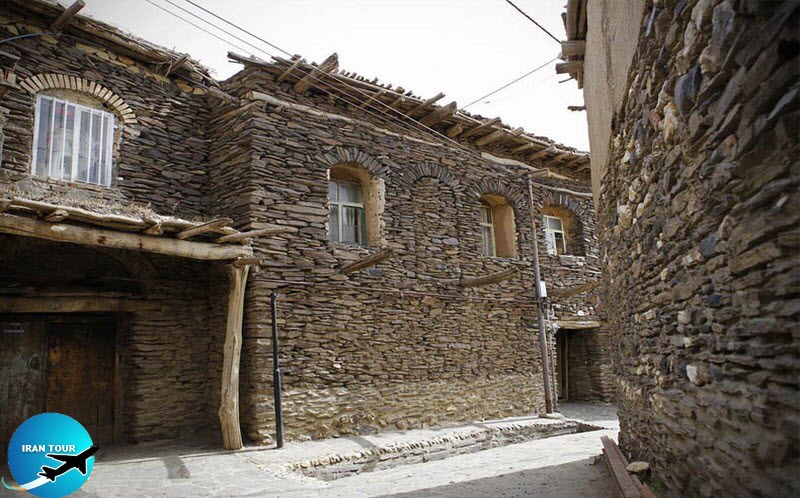 |
Varkaneh village
If you are searching for a peaceful and quiet place with hospitable people, you must definitely go to the historic village of Varkaneh. Varkaneh village is known as the pearl of rural tourism in the province. This village with streets surrounded by rubble stones which under locality lights are burnt down is reminiscent of Europe's Renaissance. Being used local and traditional materials and especially stones in constructions make this village looks spectacular
There is a beautiful stable with a unique design in the southern part of the village which was built completely from granite rocks by Ms. Mehri in 1975. This construction was used as a breeding center of an Iranian Arab horses for Pahlavi's court. Mehri Gharaguzlou (Ms. Mehri) is the first lady who attempted to breed Iranian Arab horse in Varkaneh and she also wrote a book titled "Genealogy of Iran's Arab horse" in this regard.
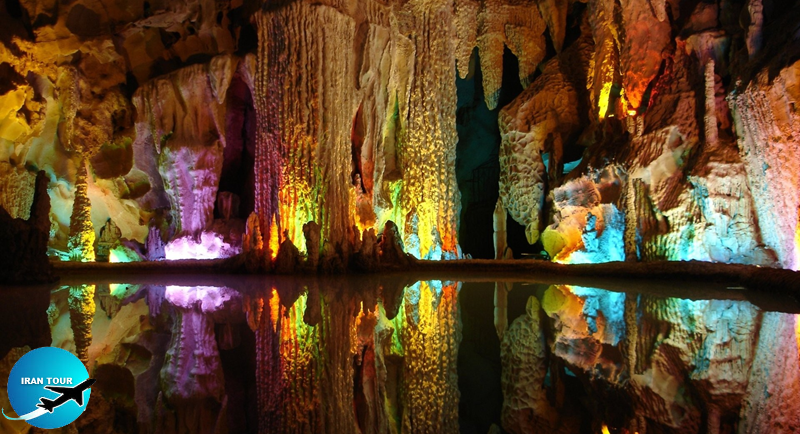 |
Ali Sadr cave
Ali Sadr is the world's largest watery cave which attracts millions of visitors every year. The Ali-Sadr cave, which is located 75 km from the city of Hamedan, is a unique natural phenomenon. Beautiful cauliflower and needle-shaped stalactite and stalagmite forms on the ceiling and walls of the cave have created lots of unique and eye-catching views. What distinguishes Alisadr cave from the other caves is easy to use of waterways through the cave which due to its area, one can easily pass through the cave in conventional and normal boats. According to the research reports of a German spelunkers group headed by Mr. Michael laumanns (2000-2001 AD), Alisadr cave is the most important tourism cave in the world in terms of long-distance boating to the public that this distance is approximately 2100 m. In this report,
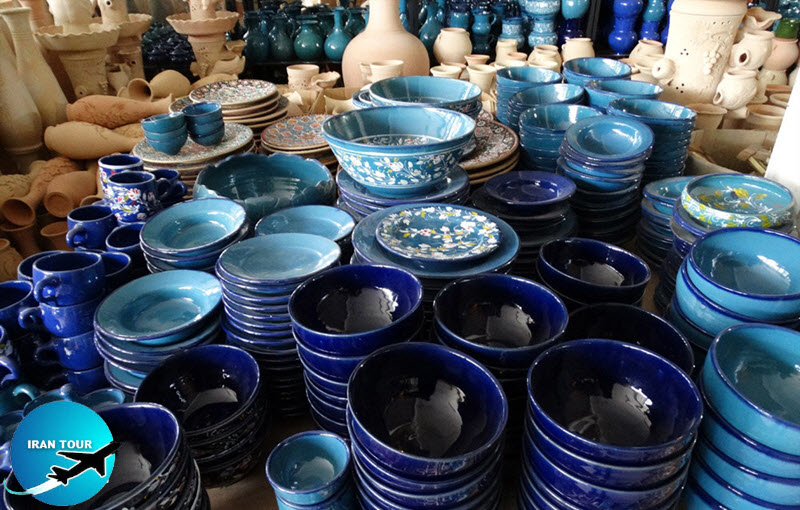 |
Ceramic and pottery
Ceramic and pottery are ambassadors of Hamedan's handicrafts, and Lalejin is known as the capital of Pottery and Ceramics all around the world by Unesco. For thousands of years, the skillful hands of men, women, children, and the elderlies have worked with clay sitting behind the traditional pottery wheels and have been creating art by soil and clay. As you stroll through the ancient city, you see how people from all walks of life are heavily involved in their ancestors' tradition of creating works of art. The majority of local residents earn their bread and butter from this craft ranging from utensils to decorative items. Most foreign and domestic tourists are enthusiastic to purchase local handicrafts such as ceramics, leather products, traditional Iranian glasses, kilims, wooden crafts, and a variety of other traditional items
Tuyserkan city
Tuyserkan is a pleasing small city with pleasant weather, located in a valley between Alvand Mountain from one side and Pishkuh, of Zagros Chain Mountain, from the other side. Tuyserkan is known as the paradise of western Iran and the land of green gold. This city is one of the most important producers of walnut, and in the case of variety and quality has one of the best products in the world. This is why it is called the land of green gold.
According to FAO, Iran is the third country (after China and America) in terms of cultivating and producing lands of walnut and Tuyserkan has the biggest share of it. Moreover, producing handicrafts is popular in this region. Having a huge amount of raw materials for woodcarving and carpentry and also the availability of independent centers of woodcarving are some important features of the city.
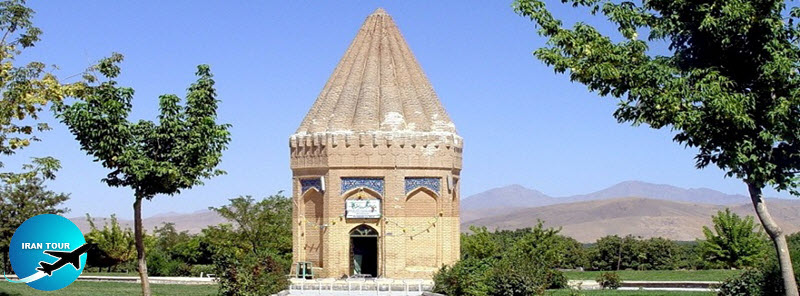 |
Habakkuk's tomb Tuyserkan
Another historical and holy site of Jews in the city of Hamedan can be Habakkuk's tomb in Tuyserkan. Habakkuk was one of the honorable twelve prophets in the Hebrew Bible, and he was a descendent of Moses (PBUH). His name has been mentioned in Old Testament, and even Muslims respected him. Habakkuk the Prophet migrated to Iran with some of his followers and lived in Tuyserkan, where he is buried now.
Mir-razidin Artimani is one of the most well-known poets and mystics of the Shah Abbas Safavid era who was born in the 17th century in Artiman, a small village in Tuyserkan. His tomb is located on Hamineh hill overlooking the beautiful valley of Sarabi. This
tomb consists of a brick and rectangular building. Inside the tomb, there is also a simple brick decoration.
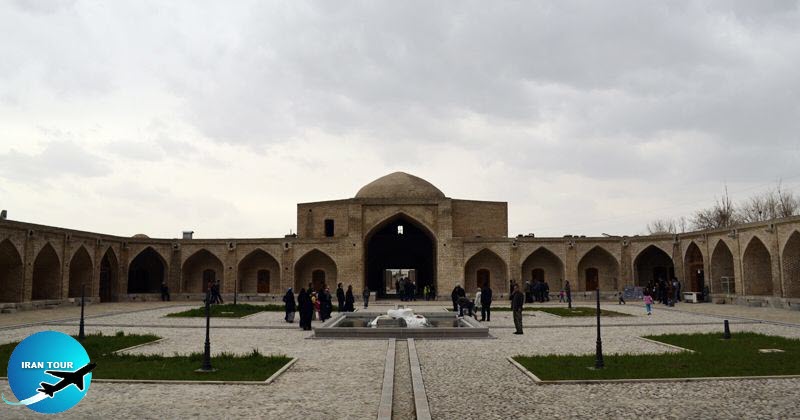 |
Shah Abbasi Caravanserai
This caravanserai is one of the caravansaries of the Safavid era 17th century, which is known as Shah Abbasi Caravanserai. This unique caravanserai had been the resort for caravans, traders, and pilgrimages for many years, Body of its walls is made of adobe bricks but the foundation of the chamber's walls is made with stone and brick.
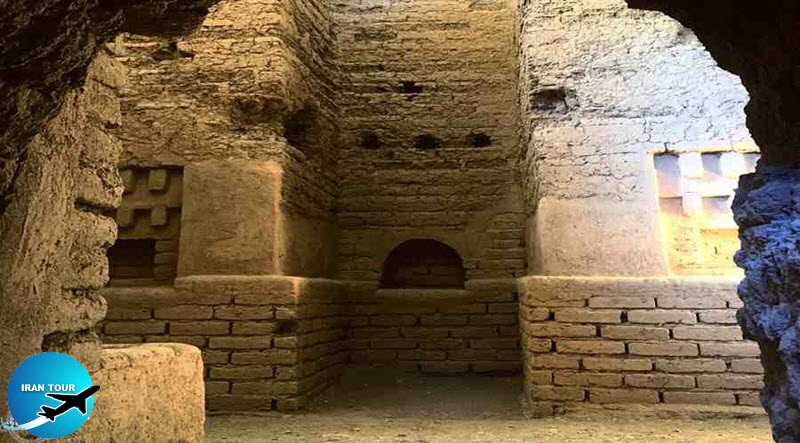 |
Nooshijan hill
Nooshijan ancient citadel represents the first Persian architectural patterns in Iran and is considered the most unique and most valuable relics in the country. Archaeological excavations have brought to light different historical eras and three cycles of civilizations on this ancient hill, including Parthian, Achaemenid, and the Median have been recognized, the main monument and the architectural relics in this connection are, the fire-temple or (Atashkadeh) on the western side of the hill, the pillared hall or 'Apadana'the main hall or temple used for worship, chambers, store-rooms, tunnel and ramparts of the castle.
Because of the importance and value of the historical monument and aspects of holiness in this ancient hill, Medians, when decided to leave this place, tried to fill the interior spaces in order to preserve the monument (750-600 BC). After that, this structure was used as a foundation and other buildings were constructed on it.
The Underground relics of Samen
This complex is located in the city of Samen in the south of Hamedan. The complex of manmade caves is expanded in an area of 5 hectares under the main streets and houses of people and it is placed on a base of granite and it consists of connecting corridors which end up in numerous rooms. Until now, more than 60 manmade caves are found in different depths of 3 to 6 meters under the ground level. There also exist some burial places. Based on the studies, it seems the reason for such complexes in the historical era before Parthian to be ritual and religious. In the era of Parthians, these rooms were used as burial places and in the middle ages of the Islamic era, they were used as havens.
Lotfaliyan House
Lotfaliyan House is a fine example of traditional Persian architecture, and it consists of three parts: Hosseinieh, inner part, and stable. This historical house has remained from the Qajar era. Nowadays the Malayer Museum is established in this historic house, which introduces local customs, culture, and history of the people in the city of Malayer.
Domical construction
This domical construction is located in the southern suburb of Malayer. It was built during the Qajar era by a person named Mir-Fatah Saykh-alislam and also his son Mahmud Fatahi (Sharif-almamalik) in order to store ice in the cold season to be used in hot seasons. The building's height from its ceiling to the floor is 16 meters, and its diameter on the ground is 12 meters. The icehouse has two entrances, one of which was used to put the ice inside and the other was used to take the ice out. Materials used in the building consist of brick, stone, and clay. Lower walls are made of rock and the domical ceiling is made of two layers of bricks and clay.
The reason was to keep inside of icehouse cold.
Nahavand city
Nahavand is the southern city in Hamedan province, but from a historical perspective, Nahavand is rooted in the depth in Iran's history and has witnessed the rises and falls of all historical dynasties of Iran. Historical Gian hill in Nahavand dates back to 4 millennia B.C. this hill has a great historical value and many fine painted potteries were found here. Among the most important historical events that occurred in Nahavand was the last battle between Iranian and Arabs. The battle is known as the victory of the victories after which Iran was occupied by Arabs and this is how the Sassanid dynasty was wiped out. Many coins of different Sassanid kings were found in Nahavand's mint and all of them indicate the glory and prosperity of this city in the past.
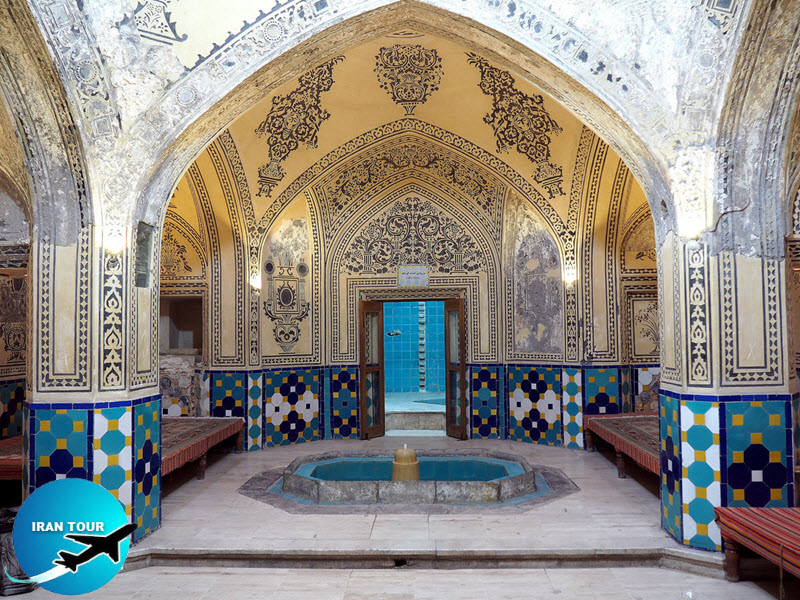 |
Hajagha Torab old Bath
This bath is built in the Naserdin-Shah period in 1910 based on the Safavid style. Hajagha Torab bath has two main parts. The first part was specifically used by nobles and princes, and the second part was for the use of the public. Because of these two parts, the bath is also known as a twin bath. Both these two parts included Sarbineh (cloakroom) and Garmineh (hot bath). Additionally, the bath has two different sections specified for men and women which are used in anthropology museum these days and shows the costumes and lifestyles of people in Nahavand. One of the exciting attractions of the bath is its heating system of it which you are able to see through glasses.
Nahavand is known as the city of spring water due to the number of gushing springs water it has. The springs come out of the mountains and provide water for farmers and bring life to the land.
Taj Abad caravanserai
Taj Abad caravanserai is one of the rare caravanserais of Iran because of its circular plan and it is also very important in the western region of this country. Other examples of these circular caravanserais which are smaller than Taj-Abas are Robat Zeinodin in Yazd-Kerman and Zire between Kashan and Natanz. This monument was the inns of religious caravans of Iran heading to Karbala and because of that was so popular and was used by people and caravans for a long time. Stables are behind the caravansary, numerous rooms for the rest of the passengers, and some chambers for trading were in front of the building overlooking the central yard. In the paved yard, also exist two wells to provide the drinking water for caravans
Mount Alvand is one of the natural attractions of Hamedan and its highest peak is 3580 meters high. This mountain with deep and green valleys, springs, prairies, peaks, beautiful green settings, etc. attracts thousands of people from all around the world. Many settlements were formed in the foothills of the mountains because of the natural and defensive position of Alvand which have ancient and historical importance.


